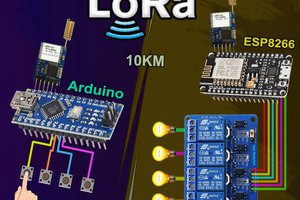In this Lora project tutorial, I have shown how to make the LoRa Project using the Arduino ESP8266 control relay with real-time feedback.

So after turning on and off the appliances the receiver circuit will send feedback to the transmitter circuit and you can monitor the real-time feedback in the OLED display.
Tutorial Video on the LoRa Project using Arduino ESP8266
In this article, I have covered the following topics.
- Explained this ESP8266 Arduino Lora home automation project.
- Explained Transmitter & Receiver Lora circuit.
- Explained the basic AT commands and source codes for this LoRA project.
- Connecting the LoRa module with Arduino and ESP8266.
- Control high voltage appliances with LoRa.
So if you follow all the steps, you can easily make this Lora Arduino project to control any appliances from 5KM away in the rural areas without Wi-Fi and Bluetooth. So this project is very useful in rural areas.
Although the PCB is not mandatory, I have used PCB for the transmitter LoRa circuit to make the circuit compact and give the project a professional look.

Required components for the Transmitter Lora circuit:
- Lora Module REYAX RYLR998 1no
- ESP8266 NodeMCU 1no
- 1k Resistors 2no
- 4.7k Resistor 1no
- 10k Resistor 1no
- 5-mm LED 2no
- Push-button 4no

Required components for the Receiver Arduino Lora circuit:
- Lora Module REYAX RYLR998 1no
- Arduino UNO 1no
- 5v 4-channel Relay Module 1no
- 1k Resistor 1no
- 2k Resistor 1no
- 4.7k Resistor 1no
- 5-mm LED 1no
- Switch or pushbuttons 4no
Required Components for the PCB used for the transmitter circuit:
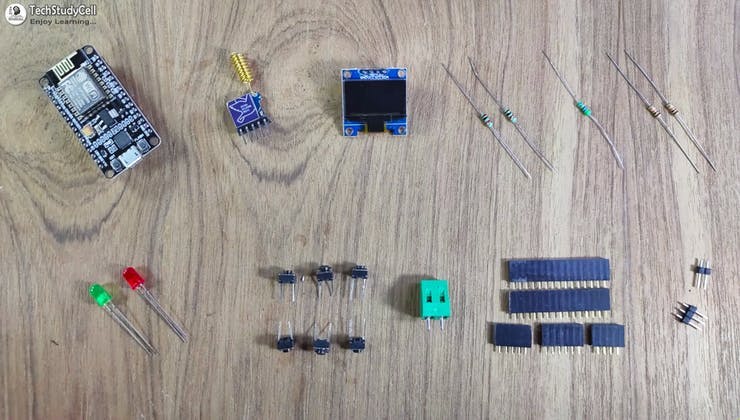
- REYAX RYLR998 or RYLR896 Lora module 1no
- ESP8266 NodeMCU 1no
- 1k Resistors 2no
- 4.7k Resistor 1no
- 10k Resistor 2no
- 5-mm LED 2no
- Push-button 6no
- Jumper 2no
- Terminal connector 2 pin 1no
- OLED Display
Transmitter Lora Circuit Using NodeMCU ESP8266
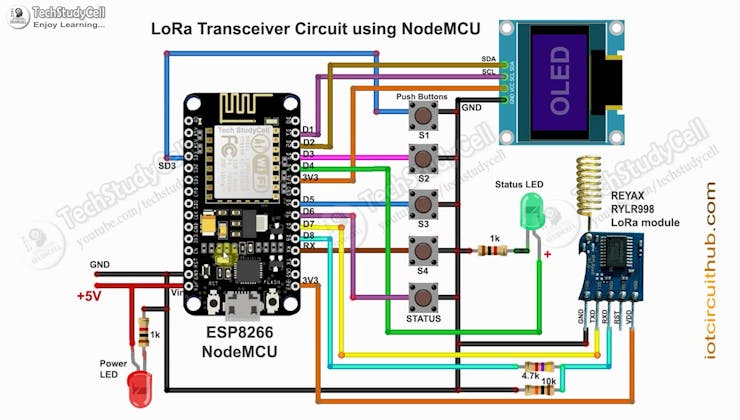
In the transmitter LoRa circuit, I have used NodeMCU. I have made a voltage divider using 4.7k and 10k resistors to drop down the 5volt logic level to 3.3volt logic level for the LoRa module.
I have used D7 as RX and D8 as TX for the serial communication with the LoRa module.
The pushbuttons are connected with the SD3, D3, D5, RX, and D6 GPIO pins of the NodeMCU. ( Here SD3, D3, D5, & RX are for controlling the relays, and D6 is used for requesting feedback from receiving side).
The status LED is connected with the D4 GPIO pin.
You can use any 5V DC power supply to supply the circuit.
Receiver Lora Circuit Using Arduino UNO
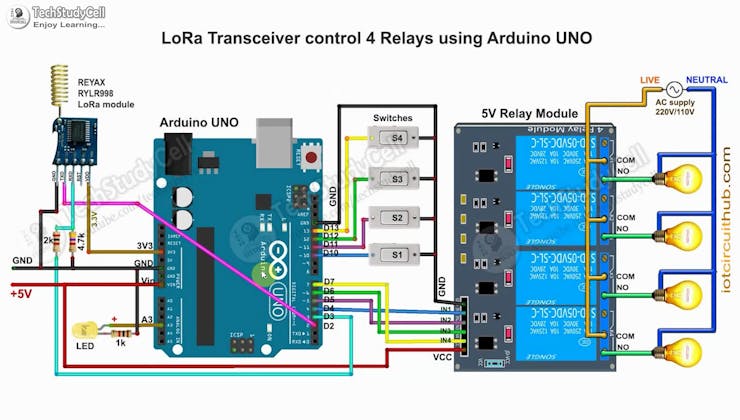
On the receiving end, I have used Arduino UNO. In the circuit, I have made a voltage divider using 2k and 4.7k resistors to drop down the 5volt logic level to 3.3volt logic level.
I have used D4, D5, D6 & D7 pins to control the 4-channel relay module.
As per the source code, when the control pins of the relay module receive the LOW signal the respective relay will turn on and the relay will turn off for the HIGH signal in the control pin.
And the GPIO D10, D11, D12 & D13 are connected with switches to control the relay module manually.
The LED is connected with the A3 pin.
I have used a 5V 2Amp power supply to supply the Arduino UNO and relay module.
Please take the proper safety precautions while working with high voltage.
PCB Used for the Transmitter LoRa Circuit

To make the circuit compact and give a professional look, I have designed the PCB for the transmitter end LoRa circuit.
You can download the PCB Gerber file of this Lora project from the following link:
GitHub to Download PCB Gerber File
Why you should use JLC SMT Service?
On JLCPCB's one-stop online platform, customers enjoy low-cost & high-quality & fast SMT service at an $8.00 setup fee($0.0017 per joint).
$27 New User coupon & $24 SMT coupons every month.
Visit https://jlcpcb.com
JLCPCB SMT Parts Library 200k+ in-stock components...
Read more » Subhajit
Subhajit
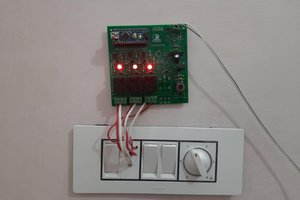
 Sagar 001
Sagar 001
